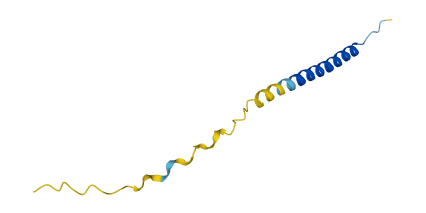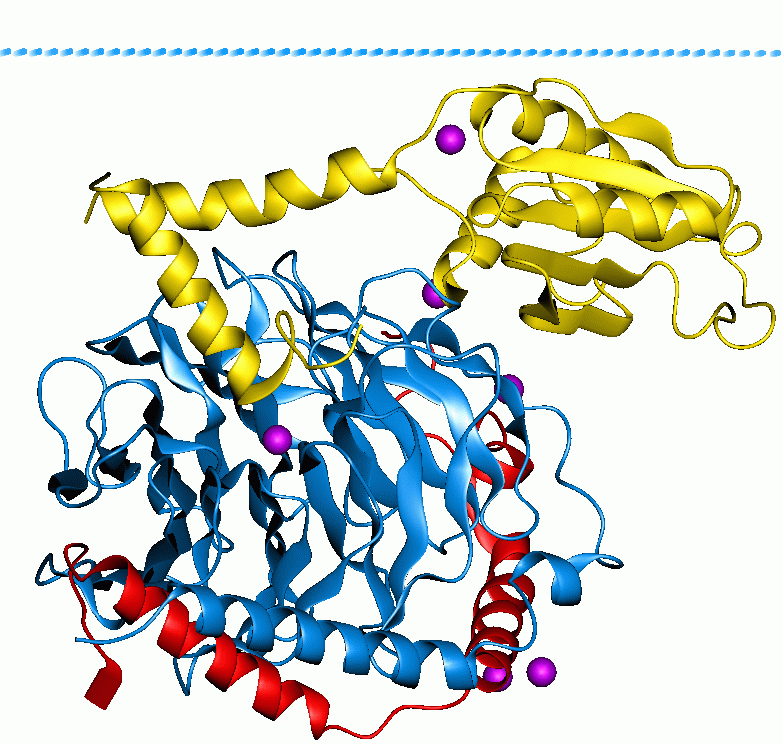|
GPR19
Probable G-protein coupled receptor 19 is a protein that in humans is encoded by the ''GPR19'' gene. GPR19 has been proposed as the receptor for the peptide hormone adropin Adropin is a peptide encoded by the energy homeostasis-associated gene ENHO, which is highly conserved across mammals. Adropin's biological role was first described in mice by a group led by Andrew Butler, as a protein hormone, secreted from the .... References Further reading * * * G protein-coupled receptors {{transmembranereceptor-stub ... [...More Info...] [...Related Items...] OR: [Wikipedia] [Google] [Baidu] |
Adropin
Adropin is a peptide encoded by the energy homeostasis-associated gene ENHO, which is highly conserved across mammals. Adropin's biological role was first described in mice by a group led by Andrew Butler, as a protein hormone, secreted from the liver (hepatokine), in the context of obesity and energy homeostasis. They derived the name "Adropin" from the Latin " aduro" - to set fire to, and " pinguis" - fat. In animals, adropin has been shown to have a regulatory role in carbohydrate/lipid metabolism, as well as in endothelial function. Adropin expression is regulated by feeding status, the biological clock, as well as upregulated by estrogen via ERa. In humans, lower levels of circulating adropin are associated with several medical conditions including metabolic syndrome, obesity and inflammatory bowel disease. The brain is the organ with the highest levels of adropin expression. The orphan G protein-coupled receptor GPR19, has been proposed as a receptor for adropin, with a po ... [...More Info...] [...Related Items...] OR: [Wikipedia] [Google] [Baidu] |
G Protein
G proteins, also known as guanine nucleotide-binding proteins, are a family of proteins that act as molecular switches inside cells, and are involved in transmitting signals from a variety of stimuli outside a cell to its interior. Their activity is regulated by factors that control their ability to bind to and hydrolyze guanosine triphosphate (GTP) to guanosine diphosphate (GDP). When they are bound to GTP, they are 'on', and, when they are bound to GDP, they are 'off'. G proteins belong to the larger group of enzymes called GTPases. There are two classes of G proteins. The first function as monomeric small GTPases (small G-proteins), while the second function as heterotrimeric G protein complexes. The latter class of complexes is made up of '' alpha'' (α), ''beta'' (β) and ''gamma'' (γ) subunits. In addition, the beta and gamma subunits can form a stable dimeric complex referred to as the beta-gamma complex . Heterotrimeric G proteins located within the cell are activ ... [...More Info...] [...Related Items...] OR: [Wikipedia] [Google] [Baidu] |
Protein
Proteins are large biomolecules and macromolecules that comprise one or more long chains of amino acid residues. Proteins perform a vast array of functions within organisms, including catalysing metabolic reactions, DNA replication, responding to stimuli, providing structure to cells and organisms, and transporting molecules from one location to another. Proteins differ from one another primarily in their sequence of amino acids, which is dictated by the nucleotide sequence of their genes, and which usually results in protein folding into a specific 3D structure that determines its activity. A linear chain of amino acid residues is called a polypeptide. A protein contains at least one long polypeptide. Short polypeptides, containing less than 20–30 residues, are rarely considered to be proteins and are commonly called peptides. The individual amino acid residues are bonded together by peptide bonds and adjacent amino acid residues. The sequence of amino acid residue ... [...More Info...] [...Related Items...] OR: [Wikipedia] [Google] [Baidu] |
Gene
In biology, the word gene (from , ; "...Wilhelm Johannsen coined the word gene to describe the Mendelian units of heredity..." meaning ''generation'' or ''birth'' or ''gender'') can have several different meanings. The Mendelian gene is a basic unit of heredity and the molecular gene is a sequence of nucleotides in DNA that is transcribed to produce a functional RNA. There are two types of molecular genes: protein-coding genes and noncoding genes. During gene expression, the DNA is first copied into RNA. The RNA can be directly functional or be the intermediate template for a protein that performs a function. The transmission of genes to an organism's offspring is the basis of the inheritance of phenotypic traits. These genes make up different DNA sequences called genotypes. Genotypes along with environmental and developmental factors determine what the phenotypes will be. Most biological traits are under the influence of polygenes (many different genes) as well as gen ... [...More Info...] [...Related Items...] OR: [Wikipedia] [Google] [Baidu] |
Receptor (biochemistry)
In biochemistry and pharmacology, receptors are chemical structures, composed of protein, that receive and transduce signals that may be integrated into biological systems. These signals are typically chemical messengers which bind to a receptor and cause some form of cellular/tissue response, e.g. a change in the electrical activity of a cell. There are three main ways the action of the receptor can be classified: relay of signal, amplification, or integration. Relaying sends the signal onward, amplification increases the effect of a single ligand, and integration allows the signal to be incorporated into another biochemical pathway. Receptor proteins can be classified by their location. Transmembrane receptors include ligand-gated ion channels, G protein-coupled receptors, and enzyme-linked hormone receptors. Intracellular receptors are those found inside the cell, and include cytoplasmic receptors and nuclear receptors. A molecule that binds to a receptor is called a ligand ... [...More Info...] [...Related Items...] OR: [Wikipedia] [Google] [Baidu] |
Peptide Hormone
Peptide hormones or protein hormones are hormones whose molecules are peptide, or proteins, respectively. The latter have longer amino acid chain lengths than the former. These hormones have an effect on the endocrine system of animals, including humans. Most hormones can be classified as either amino acid–based hormones (amine, peptide, or protein) or steroid hormones. The former are water-soluble and act on the surface of target cells via second messenger system, second messengers; the latter, being lipid-soluble, move through the plasma membranes of target cells (both cell membrane, cytoplasmic and nuclear membrane, nuclear) to act within their cell nucleus, nuclei. Like all peptides and proteins, peptide hormones and protein hormones are synthesized in cell (biology), cells from amino acids according to Messenger RNA, mRNA transcripts, which are synthesized from DNA templates inside the cell nucleus. Preprohormones, peptide hormone precursors, are then processed in several sta ... [...More Info...] [...Related Items...] OR: [Wikipedia] [Google] [Baidu] |



